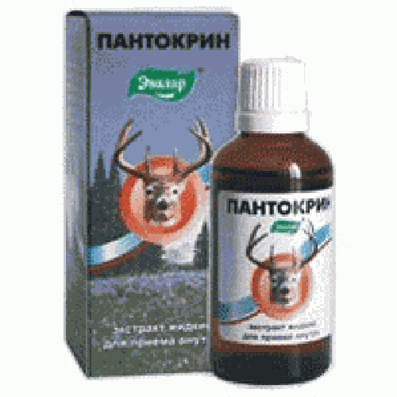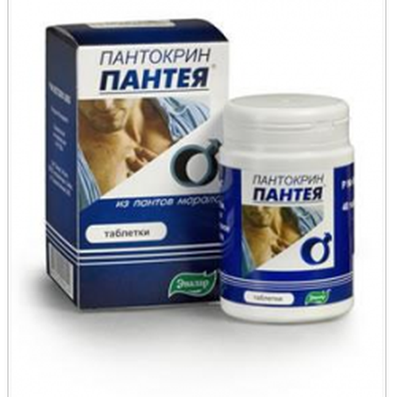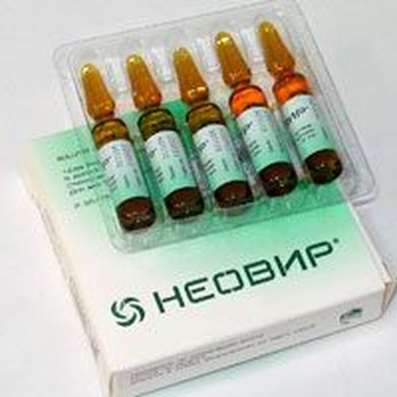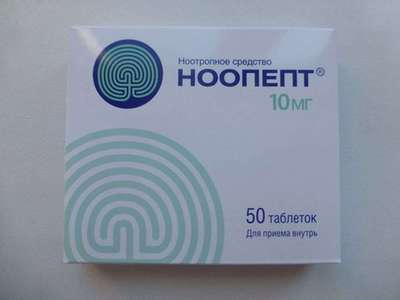Instruction for use: Cordinorm
I want this, give me price
Trade name of the drug – Cordinorm
Dosage Form: tablets
Active substance: Bisoprololum
ATX
C07AB07 bisoprolol
Pharmacotherapeutic group: Beta1-selective blocker [Beta-blockers]
The nosological classification (ICD-10)
I10 Essential (primary) hypertension: hypertension; Arterial hypertension; Arterial hypertension crisis course; Essential Hypertension; Essential hypertension; Essential hypertension; Essential hypertension; Essential hypertension; Primary hypertension; Arterial hypertension, complications of diabetes; The sudden increase in blood pressure; Hypertensive disorders of blood circulation; hypertensive condition; hypertensive crises; arterial Hypertension; malignant Hypertension; Hypertonic disease; hypertensive crises; accelerated hypertension; malignant hypertension; The aggravation of hypertensive disease; Transient hypertension; Isolated systolic hypertension
I15 Secondary hypertension: Arterial hypertension, complications of diabetes; hypertension; The sudden increase in blood pressure; Hypertensive disorders of blood circulation; hypertensive condition; hypertensive crises; hypertension; arterial Hypertension; malignant Hypertension; hypertensive crises; accelerated hypertension; malignant hypertension; The aggravation of hypertensive disease; Transient hypertension; hypertension; Arterial hypertension; Arterial hypertension crisis course; renovascular hypertension; Hypertension symptomatic; Renal hypertension; Renovascular hypertension; renovascular hypertension; Symptomatic hypertension
I15.0 Renovascular hypertension: hypertensive crisis; renovascular disease; accelerated hypertension; Isolated systolic hypertension
I20 Angina [angina]: Heberden disease; Angina pectoris; The attack of angina pectoris; recurrent angina; Spontaneous angina; Stable angina pectoris; Angina rest; Angina progressing; Angina mixed; Angina spontaneous; stable angina; Chronic stable angina; Angina Syndrome X
Composition (per tablet):
bisoprolol fumarate 5 mg, 10 mg
Other ingredients: MCC; mannitol; croscarmellose sodium; magnesium stearate; Valium; titanium dioxide; macrogol 6000
in blister 10 pcs .; In the paper cartons 3 blisters.
Description
Round convex, film-coated, white tablets scored on one side, and lateral risk engraving «B 5" (for 5 mg tablets) or «B 10" (10 mg tablet) on the other side.
Pharmacological Properties of Cordinorm
Pharmachologic effect - antianginal, hypotensive, anti-arrhythmic.
Pharmacodynamics
Selective beta1-blocker without its own sympathomimetic activity. Blocking in low doses of beta1-adrenergic receptors of the heart, reduces the formation of catecholamines stimulated cAMP from ATP, reduces the current intracellular Ca2 +, has a negative chrono-, Drome, BATM and inotropic effect (slows heart rate, depresses conduction and excitability, reduces myocardial contractility). With increasing doses has beta2-adrenoceptor blocking action. PR in the early use of beta-blockers in the first 24 hours, increases (as a result of reciprocal increase in the activity of alpha-adrenoceptor stimulation and removal of beta2-adrenergic receptors), which after 1-3 days back to the original, but with long-term appointment is reduced.
The hypotensive effect was associated with reduced IOC, sympathetic stimulation of peripheral blood vessels, reduction in activity of the renin-angiotensin system (is less important for patients with initial hypersecretion renin), restoration of the sensitivity of the baroreceptors of the aortic arch (not going to increase their activity in response to lower BP) and the influence on the CNS. When hypertension effect occurs within 2-5 days, stable operation - through 1-2 months. Antianginal effect is due to a decrease in myocardial oxygen demand as a result of deceleration in heart rate and decrease contractility, lengthening of diastole, improving myocardial perfusion. Due to increasing end Dad in the left ventricle and increase the tension of the muscle fibers of the ventricles can increase oxygen demand, especially in patients with chronic heart failure. The antiarrhythmic effect is due to the elimination of arrhythmogenic factors (tachycardia, increased activity of the sympathetic nervous system, increased cAMP levels, hypertension), decrease in the rate of spontaneous excitation of the sinus and ectopic pacemakers and slowing AV conducting (mostly in anterograde and to a lesser extent - in the retrograde direction through the AV node) and on additional routes. In contrast, nonselective beta-blockers when administered at high therapeutic doses has a less pronounced effect on the organs containing beta2-adrenergic receptors (pancreas, skeletal muscle, smooth muscle of the peripheral arteries, bronchi and uterus) and carbohydrate metabolism, causes delays Na + in organism; atherogenic action expression is not different from that of propranolol. When used in large doses it has a blocking effect on both beta-adrenoceptor subtype.
Pharmacokinetics
Absorption - 80-90%, it does not affect food intake on absorption. Cmax in plasma observed after 1-3 hours, binding to plasma proteins - about 35%. The permeability of the BBB and placental barrier, the secretion of breast milk - low. 50% of the dose is metabolized in the liver to inactive metabolites, T1 / 2 -. 9-12 hours About 98% is excreted by the kidneys, 50% - unchanged, less than 2% - with bile.
Indications for Cordinorm
arterial hypertension;
Coronary heart disease (prevention of angina attacks).
Contraindications for Cordinorm
hypersensitivity to bisoprolol or to any of the components of the drug, other beta-blockers;
shock (including cardiogenic);
collapse;
pulmonary edema;
congestive heart failure;
chronic heart failure in the stage of decompensation;
AV block of 2-3 degrees (without pacemaker);
sinoatrial block;
syndrome sick sinus;
bradycardia (heart rate <50 beats / min.);
Prinzmetal angina;
cardiomegaly (without heart failure);
hypotension (SBP <100 mm Hg, especially myocardial infarction..);
asthma and COPD history;
simultaneous MAO inhibitors (except for MAO-B);
late stages of peripheral circulation;
Raynaud's disease;
pheochromocytoma (without simultaneous use of alpha-blockers);
metabolic acidosis;
age of 18 years (effectiveness and safety have been established).
Carefully:
liver failure;
chronic renal failure;
myasthenia gravis;
hyperthyroidism;
AV block of 1 degree;
depression (including history);
psoriasis;
elderly age.
Pregnancy and breast-feeding
Application of pregnancy and breastfeeding is possible if the benefit to the mother outweighs the risk of side effects in the fetus and child.
Side effect of Cordinorm
From the nervous system: fatigue, weakness, dizziness, headache, drowsiness or insomnia, "nightmarish" dream, depression, anxiety, confusion, or momentary loss of memory, hallucinations, asthenia, myasthenia gravis, paresthesia in the extremities (in patients with "intermittent "claudication and Raynaud's syndrome), tremor.
From the senses: visual disturbances, reduced secretion of tear fluid, dryness and soreness of eyes, conjunctivitis.
Cardio-vascular system: sinus bradycardia, heart rate, conduction disturbances infarction, AV block (up to the development of a complete transverse blockade and heart failure), arrhythmia, weakening of the myocardial contractility and development (worsening) of chronic heart failure, reduced blood pressure, orthostatic hypotension, manifestation of vasospasm (strengthening of peripheral blood circulation, cooling of the lower extremities, Raynaud's syndrome), pain in the chest.
On the part of the digestive tract: dryness of the oral mucosa, nausea, vomiting, abdominal pain, constipation or diarrhea, abnormal liver function (dark urine, yellow skin or sclera, cholestasis), changes in taste.
The respiratory system: nasal congestion, difficulty breathing when administered at high doses (loss of selectivity) and / or in predisposed patients - laryngo and bronchospasm.
From endocrine system: hyperglycemia (in patients with insulin-dependent diabetes), hypoglycemia (in patients receiving insulin), hypothyroid state.
Allergic reactions: itching, rash, urticaria.
For the skin: increased sweating, flushing of the skin, rash, psoriasiform skin reactions, exacerbation of psoriasis, alopecia.
Laboratory findings: thrombocytopenia (unusual bleeding and hemorrhage), agranulocytosis, leukopenia, changes in the activity of enzymes, bilirubin and triglycerides.
Effect on the fetus: intrauterine growth retardation, hypoglycemia, bradycardia.
From the musculoskeletal system: muscle weakness, cramps in the calf muscles.
Other: back pain, arthralgia, weakening of libido; rarely - reduced potency, "cancellation" syndrome (increased angina attacks, increased blood pressure).
Interaction
The allergens used for immunotherapy, or allergen extracts for skin tests increase the risk of severe systemic allergic reactions or anaphylaxis in patients receiving bisoprolol. Iodinated radiopaque drugs for i / v administration increases the risk of anaphylactic reactions. Phenytoin at / in the introduction, drugs for inhalation general anesthesia (derivatives of hydrocarbons) increase the intensity of cardiodepressive action and the likelihood of blood pressure lowering. Changes the effectiveness of insulin and oral hypoglycemic drugs, masking the symptoms of developing hypoglycemia (tachycardia, increased blood pressure). Reduces clearance of lidocaine and xanthine (except dyphylline) and increases their concentration in plasma, especially in patients with initially increased clearance of theophylline under the influence of smoking. Antihypertensive effect of weakening the NSAID (delay Na + and synthesis blockade Pg kidneys), corticosteroids, and estrogens (delay Na +). Cardiac glycosides, methyldopa, reserpine and guanfacine, BCCI (verapamil, diltiazem), amiodarone and other antiarrhythmic drugs increase the risk of developing or worsening of bradycardia, AV block, cardiac arrest and heart failure. Nifedipine can lead to a significant reduction in blood pressure. Diuretics, clonidine, sympatholytic, hydralazine and other antihypertensive drugs may lead to an excessive reduction in blood pressure. Extends the action of non-depolarizing muscle relaxants and anticoagulant effect of coumarin. Tri- and tetracyclic antidepressants, antipsychotic drugs (neuroleptics), ethanol, sedatives and hypnotics drugs increase CNS depression. Not recommended simultaneous application with MAO inhibitors due to the significant increase in the hypotensive action, a break in treatment between receiving MAO inhibitors and bisoprolol must not be less than 14 days. Non-hydrogenated ergot alkaloids increase the risk of peripheral circulatory disorders. Ergotamine increases the risk of peripheral circulatory disorders; sulfasalazine increases the concentration of bisoprolol in the plasma; rifampicin shortens T1 / 2.
Dosage and Administration
Inside, in the morning on an empty stomach, not liquid, 2.5-5 mg once daily. Typically, the initial dose - 5 mg 1 time per day. If necessary to increase the dose of 10 mg 1 time per day. The maximum dose for adults - 20 mg / day.
Treatment of hypertension and angina: treatment of patients with impaired mild or moderate liver or kidney function usually does not require dose adjustment.
In patients with severe renal impairment (Cl creatinine <20 ml / min) or with severe liver problems, the maximum daily dose - 10 mg.
No dose adjustment in elderly patients is not required.
Overdose
Symptoms: arrhythmia, ventricular premature beats, bradycardia, AV block, decrease blood pressure, chronic heart failure, cyanosis of nails of fingers or palms, shortness of breath, bronchospasm, dizziness, fainting, seizures.
Treatment: gastric lavage and the appointment of absorbent medicines; Symptomatic therapy: which developed at AV blockade - in / in a 1-2 mg of atropine, epinephrine or staging a temporary pacemaker; with ventricular arrhythmia - lidocaine (Ia class of drugs does not apply); with a decrease in blood pressure - the patient must be in the Trendelenburg position; if there are no signs of pulmonary edema - in / plasma substituting solutions, with inefficiency - the introduction of epinephrine, dopamine, dobutamine (to maintain the chronotropic and inotropic effects and elimination of significant decrease in blood pressure); heart failure - cardiac glycosides, diuretics, glucagon; in convulsions - in / diazepam; with bronchospasm - beta2-adrenostimulyatorov inhalation.
Special instructions
Monitoring of patients receiving bisoprolol should include monitoring of heart rate and blood pressure (at the beginning of treatment - daily, then 1 every 3-4 months), the ECG, the content of blood glucose in patients with diabetes (1 every 4-5 months). In elderly patients, it is recommended to monitor renal function (1 every 4-5 months). It is necessary to train the patient's heart rate calculation method and instruct on the need of medical advice in heart rate less than 50 bpm. / Min. Before treatment is recommended to study of respiratory function in patients with a history of bronchopulmonary history. Approximately 20% of patients with angina Beta-blockers are ineffective. The main reason - severe coronary atherosclerosis with a low threshold of ischemia (heart rate less than 100 beats / min.) And increased end-diastolic volume of the left ventricle, which violates the subendocardial blood flow. The "smoking" the effectiveness of beta-blockers lower. Patients who use contact lenses should bear in mind that during treatment may decrease the production of tear fluid. When used in patients with pheochromocytoma have a risk of paradoxical hypertension (if not previously reached effective alpha adrenoblockade). When thyrotoxicosis bisoprolol may mask certain clinical signs of hyperthyroidism (eg tachycardia). Abrupt withdrawal in patients with thyrotoxicosis is contraindicated because the symptoms can increase. In diabetes may mask tachycardia caused by hypoglycemia. In contrast, nonselective beta-blockers practically no increase insulin-induced hypoglycemia and delay recovery of blood glucose to normal levels. At the same time taking clonidine its reception can be terminated only after a few days after discontinuation of bisoprolol. Perhaps the increased severity of hypersensitivity reactions and the lack of effect of conventional doses of epinephrine with aggravated allergic history. If necessary, an elective surgical treatment is performed for the cancellation of the drug 48 hours before general anesthesia. If the patient has taken the drug before surgery, he should pick up the drugs for general anesthesia with minimal negative inotropic effect. Reciprocal activation can be eliminated n.vagus in / atropine (1-2 mg). Drugs that reduce stocks of catecholamines (eg reserpine), may enhance the effect of beta-blockers, so patients taking these combinations of drugs should be under constant medical supervision in order to identify arterial hypotension or bradycardia. Patients with diseases bronhospasticheskimi can assign cardioselective blocker in case of intolerance and / or ineffectiveness of other antihypertensive drugs, but should strictly follow the dosage. Overdosing is dangerous development of bronchospasm. In the case of elderly patients increasing bradycardia (less than 50 u. / Min), hypotension (Sad below 100 mm Hg. Art.), The AV blockade bronchospasm, ventricular arrhythmias, severe liver and renal function is necessary to reduce the dose or stop treatment. It is recommended to discontinue therapy in the development of depression caused by the intake of beta-blockers. Do not abruptly discontinue the treatment because of the risk of severe arrhythmias and myocardial infarction. Abolition are gradually reducing the dose for 2 weeks or more (reduce dose by 25% in 3-4 days). It is necessary to cancel prior to the study in blood and urine catecholamines and Normetanephrine vanillylmandelic acid; titers of antinuclear antibodies. During the period of treatment must be careful when driving and occupation of other potentially hazardous activities that require high concentration and psychomotor speed reactions.
Storage conditions of Cordinorm
The temperature is not above 30 ° C.
Keep out of the reach of children.
Shelf life
2 years.
Do not use beyond the expiration date printed on the package.

 Cart
Cart





